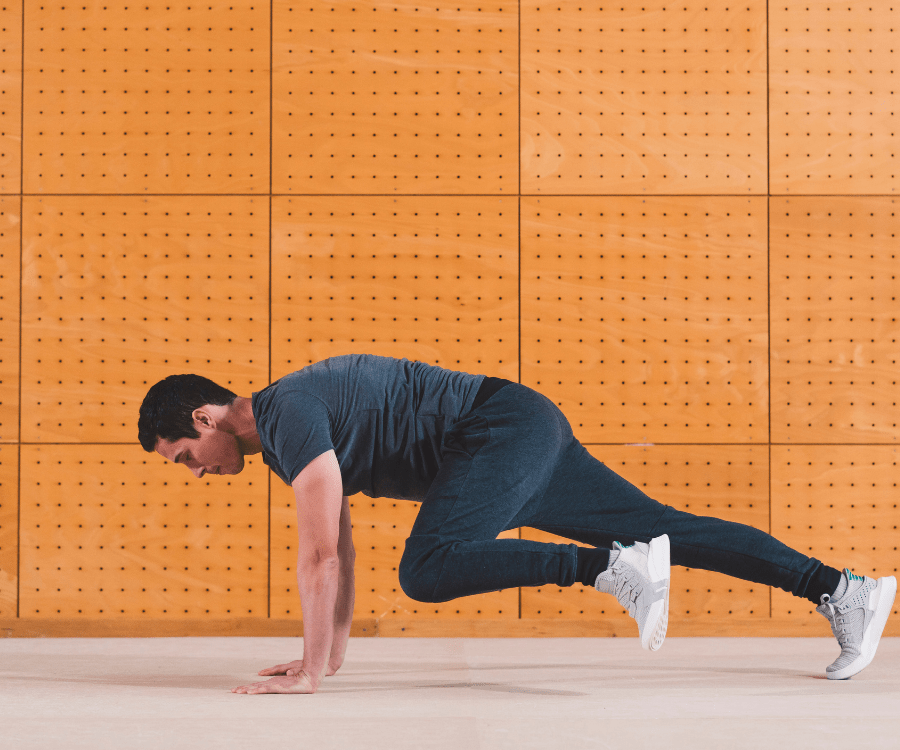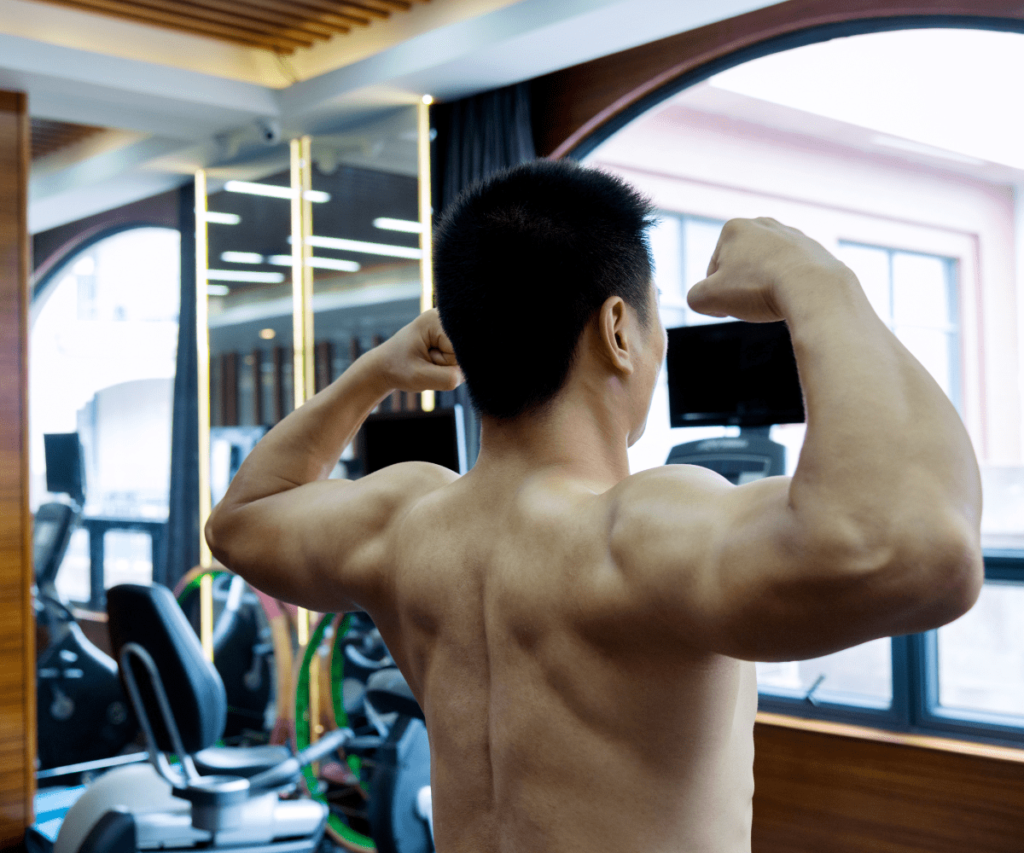Key Takeaways
Mountain climbers are a highly effective and versatile exercise that target several muscle groups in the body. This full-body exercise involves holding your body in a plank position while bringing your knees to your chest, mimicking the movement of a climber scaling a mountain.
The primary muscles worked during mountain climbers are the quadriceps, hamstrings, glutes, and core muscles. The quadriceps, located at the front of the thighs, are responsible for extending the legs and are engaged as you raise your legs during the exercise. The hamstrings, located at the back of the thighs, help to flex the knees and are also worked as you bring your knees towards your chest. The glutes, or buttocks muscles, help to extend the hips and are engaged as you push your legs back behind you.
But perhaps the most important muscle group worked during mountain climbers is the core. The core muscles, including the abdominal muscles and the obliques, help to stabilize the body and maintain a strong, balanced posture during the exercise. This is crucial for supporting the movements of the legs and upper body, as well as for maintaining proper alignment of the spine.
In addition to the muscles mentioned above, mountain climbers also engage the shoulder muscles, triceps, and chest muscles. The shoulder muscles, including the deltoids and rotator cuff muscles, help to support the body in the plank position. The triceps, located at the back of the upper arm, are used to extend the elbow and are engaged as you bring your knees towards your chest. And the chest muscles, also known as the pectoral muscles, are worked as you maintain a strong, stable posture in the plank position.

Mountain Climbers Muscles Worked
Core Muscles
The core muscles are a group of muscles located in the abdomen, lower back, and pelvis. These muscles are responsible for providing stability and support for the body, and play a crucial role in maintaining proper posture and alignment of the spine.
The core muscles include the abdominal muscles, the obliques, the pelvic floor muscles, and the muscles of the lower back. The abdominal muscles, including the rectus abdominis and the transverse abdominis, help to support the spine and maintain proper posture. The obliques, located on the sides of the abdomen, help to rotate and bend the torso. The pelvic floor muscles provide support for the pelvic organs and help to control the flow of urine and feces. And the muscles of the lower back, including the erector spinae and the quadratus lumborum, help to support the spine and maintain proper posture.
The core muscles are essential for everyday activities, such as standing, sitting, bending, and lifting. They help to support the spine and maintain proper alignment, which can prevent injuries and reduce the risk of back pain. Strong core muscles can also improve balance and stability, making it easier to perform a wide range of physical activities.
Glutes
The glutes, or buttocks muscles, are a group of three muscles located in the buttocks. These muscles, which include the gluteus maximus, the gluteus medius, and the gluteus minimus, are the largest and most powerful muscles in the human body.
The primary function of the glutes is to help to stabilize the pelvis and maintain proper alignment of the spine.
Strong glute muscles are important for everyday movements, as well as for athletic performance. They can help to improve posture and reduce the risk of back pain, and can also improve balance and stability. In addition, strong glutes can help to improve athletic performance by providing the power and force needed for activities such as running and jumping.
Hamstrings
The hamstrings are a group of three muscles located at the back of the thighs. These muscles, which include the biceps femoris, the semitendinosus, and the semimembranosus, are responsible for flexing the knee and extending the hip.
The primary function of the hamstrings is to extend the hips and flex the knees.
Quads
The quadriceps are a group of four muscles located at the front of the thighs. These muscles, which include the rectus femoris, the vastus lateralis, the vastus intermedius, and the vastus medialis, are responsible for extending the knee and flexing the hip.
The primary function of the quadriceps is to allow for movements such as walking, running, jumping, and climbing by flexing at the hips and knee.
Hip Flexors
The hip flexors are a group of muscles located in the pelvis and upper thighs. These muscles, which include the iliacus and the psoas major, are responsible for flexing the hip and bringing the knee towards the chest.
The primary function of the hip flexors is to help stabilize the hips and allow for movement from the hips, such as lifting your leg upwards.
In addition to their functional benefits, strong hip flexors can also improve the range of motion in the hips, making it easier to perform a variety of movements. This can be particularly beneficial for athletes and those who engage in activities that require a lot of hip flexibility, such as dancers and martial artists.
Chest
The chest muscles, also known as the pectoral muscles, are a group of muscles located in the chest. These muscles, which include the pectoralis major and the pectoralis minor, are responsible for moving the arms and supporting the shoulders.
The primary function of the chest muscles is to allow for pushing movements.
In addition to their functional benefits, strong chest muscles can also improve the appearance of the upper body, creating a toned and muscular appearance.
Deltoids
The deltoids, also known as the shoulder muscles, are a group of three muscles located in the shoulder. These muscles, which include the anterior deltoid, the lateral deltoid, and the posterior deltoid, are responsible for moving the arms and supporting the shoulders.
The deltoids are used in most upper body movements, including pushing and pulling. The anterior deltoids will work with the chest in pushing exercises and activities, whilst the posterior deltoids (or rear deltoids as they are also known by) will work with the back muscles to help pulling movements.
Triceps
The triceps are a group of three muscles located at the back of the upper arm. These muscles, which include the long head, the lateral head, and the medial head, are responsible for extending the elbow.
Along with the chest, triceps play a vital role in pushing movements.
Benefits of Mountain Climbers
One of the key benefits of mountain climbers is that they are a highly efficient exercise, providing a lot of bang for your buck in terms of the number of muscles worked and the benefits gained. Because mountain climbers engage multiple muscle groups simultaneously, they can help to improve overall muscle coordination and balance, as well as increase core strength and stability.
Another benefit of mountain climbers is that they are a great way to burn calories and fat. This high-intensity exercise can help to boost your metabolism and increase the number of calories you burn, making it an effective tool for weight loss and weight management. Mountain climbers can also help to improve cardiovascular endurance, making them a great option for those looking to improve their overall fitness levels.
Finally, mountain climbers are a versatile exercise that can be easily modified to suit different fitness levels and goals. For example, you can increase the speed of your mountain climbers to make the exercise more challenging, or add a jump at the end of each rep to incorporate some plyometric training. You can also vary the placement of your hands to target different muscle groups, such as widening your stance to engage the outer thighs and glutes.
Summary
To summarize, mountain climbers are a highly effective and versatile exercise that target several muscle groups in the body, including the quadriceps, hamstrings, glutes, and core muscles. This full-body exercise can help to improve muscle tone and strength, increase cardiovascular endurance, and boost overall fitness levels. With the ability to be modified to suit different fitness levels and goals, mountain climbers are a great addition to any workout routine.
